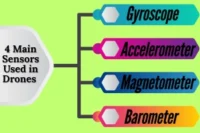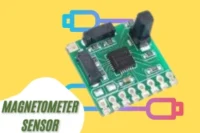FPV Drone vs. Normal Drone: Find the Right Fit for You
Published: 24 Jul 2025
When you look at the difference between FPV drone and drone, it’s clear they serve two different purposes. FPV drones are built for speed, agility, and immersive flight. You wear goggles and see what the drone sees in real time. Standard drones, on the other hand, are more about stability, camera quality, and smooth footage. They are great for photography and easy to control. Both are fun to fly, but they are made for different types of users. Let’s dive deeper into what really sets them apart.
Understanding FPV Drones
FPV drone, or First Person View drone, is built to give you the feeling of flying from inside the drone. You wear special goggles that show a live video feed from the drone’s front camera, so you’re seeing exactly what the drone sees in real time. These drones are known for their speed, agility, and full manual control. There’s no GPS or auto-stabilization to help you fly—you control every move. That’s what makes FPV drones great for racing, freestyle tricks, and immersive flight experiences. They’re not ideal for beginners who just want to shoot smooth videos. But they’re perfect for people who enjoy fast action, love building or tweaking gear, and are excited to learn how to fly with full control. If you like the idea of hands-on flying and don’t mind a challenge, an FPV drone might be just what you need.
The Role of Standard Drones
Standard drones are the ones most people think of when they hear the word “drone.” These are designed for line-of-sight flying, meaning you control the drone while watching it from the ground, usually through a remote controller or mobile app. They come with GPS support and built-in safety features like auto-hover, return-to-home, and obstacle avoidance. This makes them easy to fly, even for total beginners. Standard drones are great for aerial photography, filming, and smooth, stable flights. You don’t need advanced flying skills to get professional-looking shots. That’s why they are a top choice for vloggers, photographers, real estate agents, and anyone who wants clear, steady footage with minimal effort. If your goal is content creation or just stress-free flying, a standard drone is the way to go.
Feature Breakdown Based on User Needs

Which Drone Should You Choose
Before buying a drone, think about what kind of experience you actually want.
Start by asking yourself three things
Do you want speed or smooth video : FPV drones are built for speed and action. Standard drones focus on capturing clean, stable footage.
Are you okay with a learning curve : FPV flying is manual and takes time to master. Standard drones are easier and come with helpful flight aids.
Do you want to fly for fun or content : If you’re all about the thrill, FPV is your game. If you’re into filming, vlogging, or mapping, standard drones win.
Choose Based on Your Goal
Go with an FPV Drone : if you want hands-on control, fast moves, and immersive flying.
Go with a Standard Drone : if you want great video, smooth flights, and user-friendly controls.
5 Signs You Picked the Wrong Drone
- You wanted a smooth video, but got a twitchy quad.
You were aiming for stable cinematic footage, but the drone shakes, jitters, or won’t stay still. - You expected easy flying, but can’t control the drone.
Instead of smooth takeoffs and landings, every flight feels like a struggle. - You bought an FPV setup but didn’t know it needed tuning.
FPV drones often need manual configuration, soldering, and flight controller setup—none of which you planned for. - You thought all drones have GPS and return-to-home.
Many beginners assume these features are standard, but not all drones—especially FPV ones—include them. - You are not enjoying the flying experience at all.
If every flight feels like a chore or source of stress, you likely bought the wrong type of drone for your needs.
What About Hybrid Drones
Some models are built to do exactly that, offering the thrill of FPV flying along with camera modes for stabilized video. These drones often include toggle switches that let you swap between manual and assisted flying. While they sound ideal, there are trade-offs. Hybrids can be more expensive, and they may not match the raw performance of dedicated FPV rigs or the buttery-smooth footage of high-end camera drones. Still, for pilots who want flexibility without owning two separate drones, hybrids might be worth it—if you know exactly what you’re getting into.
Final Thoughts
Choosing between an FPV drone and a standard drone comes down to more than just specs—it’s about how you want to fly. FPV drones offer speed, thrill, and full manual control, while standard drones focus on smooth video, GPS support, and ease of use. Think less about which drone is “better” and more about what kind of flying experience you’re after.
Before you buy, take the next step: watch FPV and standard drone POV videos, test out a drone simulator, or talk to someone who’s flown both. That bit of hands-on research can save you money—and make sure you actually enjoy the drone you end up with.
FAQs
They can be. FPV setups often include goggles, custom parts, and tools—plus crash repairs.
It depends on your country. Many places require registration for drones over a certain weight, and some need certification for FPV flying.
Absolutely. FPV simulators help you practice without crashing real gear. They’re cheap and super useful for beginners.





